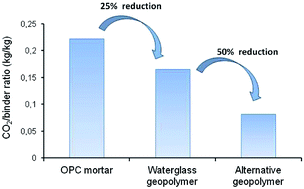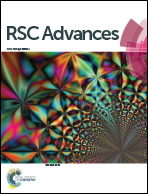Carbon footprint of geopolymeric mortar: study of the contribution of the alkaline activating solution and assessment of an alternative route
Abstract
CO2 emissions associated with geopolymeric mortar prepared using spent fluid catalytic cracking catalyst (FCC) were compared to those calculated for plain ordinary Portland cement (OPC) mortar. Commercial waterglass used for preparing the alkaline activating solution for geopolymeric mortar was the main contributing component related to CO2 emission. An alternative route for formulating alkaline activating solution in the preparation of the geopolymeric binder was proposed: refluxing of rice husk ash (RHA) in NaOH solution. Geopolymeric mortar using rice hull ash-derived waterglass led to reduced CO2 emission by 63% compared to the OPC mortar. The new alternative route led to a 50% reduction in CO2 emission compared to geopolymer prepared with commercial waterglass. Replacement of commercial waterglass by rice hull ash-derived waterglass in the preparation of the geopolymer did not cause a significant decrease in the mechanical strength of the mortar. CO2 intensity performance indicators (Ci) for geopolymeric mortars were lower than that found for OPC mortar, indicating that the new route for activating solution led to the lowest Ci value.


 Please wait while we load your content...
Please wait while we load your content...